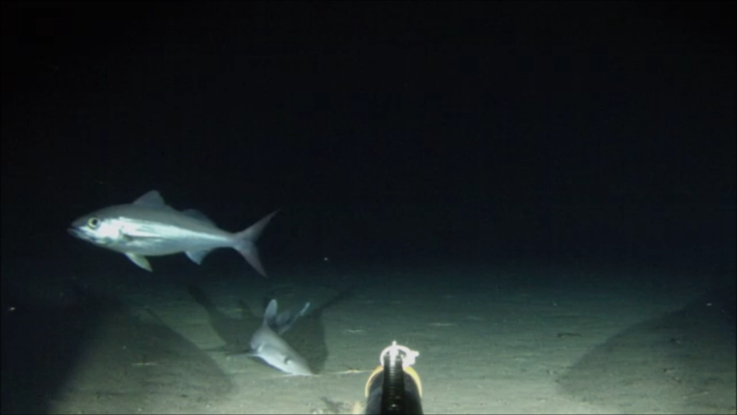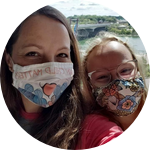About This Project
Nearshore deepwater fisheries are expanding in the Caribbean as coastal fisheries decline. Because deepwater snappers and groupers grow more slowly and mature later than their shallow-water counterparts, they are more vulnerable to overexploitation. We know very little about the biology of these deep-dwelling fishes. We will use a novel camera and hydrophone to study spawning of these species in Belize and Honduras to determine when and where spawning takes place.
Ask the Scientists
Join The DiscussionWhat is the context of this research?
The decline of coastal fisheries in MesoAmerica has led many fishers into deeper waters (>100 m) as a primary or alternative source of income and/or protein. This is placing additional pressures on deep sea fishes which are already especially vulnerable to overexploitation due to their conservative life history strategies, such as slow growth, late maturity, low natural mortality, and long life expectancies. Expanding on ongoing research, this project aims to focus on the reproductive activity of deepwater groupers and snappers to identify potential spawning aggregations in Belize and Honduras using novel and low costs methods and materials, inlcuding a hand-deployed baited remote underwater video (BRUV) and hydrophone.
What is the significance of this project?
This project will be the first to identify spawning activity in the deepwater (100-500 m) ecosystem of the region. Preliminary results of this project from capture-dependent methods indicate that spawning of several species of deepwater snappers is not highly predictable by moon phase, but is largely limited to the fall months. Targeted work with the deep camera has demonstrated potential for observing behavior, and is especially useful for monitoring long-lived grouper species in a nonlethal (capture-free) manner. The addition of a hydrophone will pinpoint spawning activity and timing nonlethally by identifying the acoustics associated with spawning. Critical times/areas will be shared directly via established partnerships with stakeholders and comangers in the region.
What are the goals of the project?
The general objective for this project is the expanded monitoring of sites where spawning aggregations of deepwater fishes are thought to occur, along with the timing of these events using standardized methods. As we have found spawning may occur over a long period of time each month, increasing monitoring will allow for adequate simple sizes and for more camera deployments, which have previously been limited due to technical issues. The addition of a hydrophone to the camera installation has the potential to identify spawning activity when fish are not susceptible to capture and/or are not seen on the camera by detecting the acoustics associated with spawning. Cameras and hydrophones will be deployed at two sites in Belize and Honduras where spawning has been documented.
Budget
This project will supplement an ongoing research project on the deepwater (100-500m) fisheries we are undertaking in the MesoAmerican region. We are currently using scientific vertical longline and BRUV surveys to determine the distribution, abundance, and life history of deepwater snappers and groupers in Belize and Honduras. As part of this research, we aim to determine when and where the deepwater snappers and groupers are spawning. We have captured females in spawning condition, but have been unable to pinpoint whether the species aggregate to spawn or if the activities are more diffuse. The addition of a hydrophone to our BRUV installment will allow us to identify whether spawning activity is occurring where we can't see it. BRUVs are hand-deployed, but the addition of the electric reel will allow more deployments. Other costs include boat and crew time, materials and housings for the BRUV, a hydrophone and the accessories, a temperature depth recorder, transport, and fuel.
Endorsed by
 Project Timeline
Project Timeline
Monitoring activities are planned for the fall months of 2022, with the majority of effort split between two, week-long expeditions in Belize and Honduras in September and October. We will download and analyze data in November and December, while consulting with experts in the field to identify potential soundscapes associated with spawning activity. A peer reviewed publication on the results, along with the life history aspect of the study will be submitted in 2023.
Jun 03, 2022
Project Launched
Sep 12, 2022
Travel to Tela, Honduras for week-long research trip to deploy hydrophones
Oct 03, 2022
Travel to Glover's Reef Atoll Belize for week-long research trip to deploy hydrophones
Dec 31, 2022
Data analysis and writing
Jul 01, 2023
Submission of manuscript to peer reviewed journal
Meet the Team
Team Bio
Ivy and Sam first teamed up in 2015 with the mission to build a better BRUV (Baited Remote Underwater Video) for MarAlliance's deepwater research program. Provided with a pencil sketch and vague instructions that it should 'fold up for transport', Sam designed and built a lightweight, collapsible deepwater frame that Ivy tosses into the depths of the ocean whenever she has a chance. We've only lost one so far.
https://medium.com/maralliance...
Ivy Baremore
I am a fishery biologist working in Central America. As Techinical Coordinator of the NGO MarAlliance, I help coordinate and implement research and data analyses across our multiple country programs and lead the deepwater fisheries research in the MesoAmerican Region. I enjoy working with people from diverse backgrounds and learning new ways of looking at complex problems.
Samuel Owen
A natural tinkerer Sam has been disassembling and fixing things since he was a small child. Sam initially joined MarAlliance for a 6 month media/research internship in 2015 where he helped with research, outreach and fieldwork. He has since helped to develop new versions of baited remote underwater video including a version that we have deployed to 1100 ft. One of his latest projects is an inexpensive Conductivity Depth Recorder and Temperature Depth Recorder that will greatly expand the environmental data collection capabilities of the teams in Panama, Belize, Honduras and throughout the region.
Additional Information

Project Backers
- 3Backers
- 100%Funded
- $5,006Total Donations
- $1,668.67Average Donation


